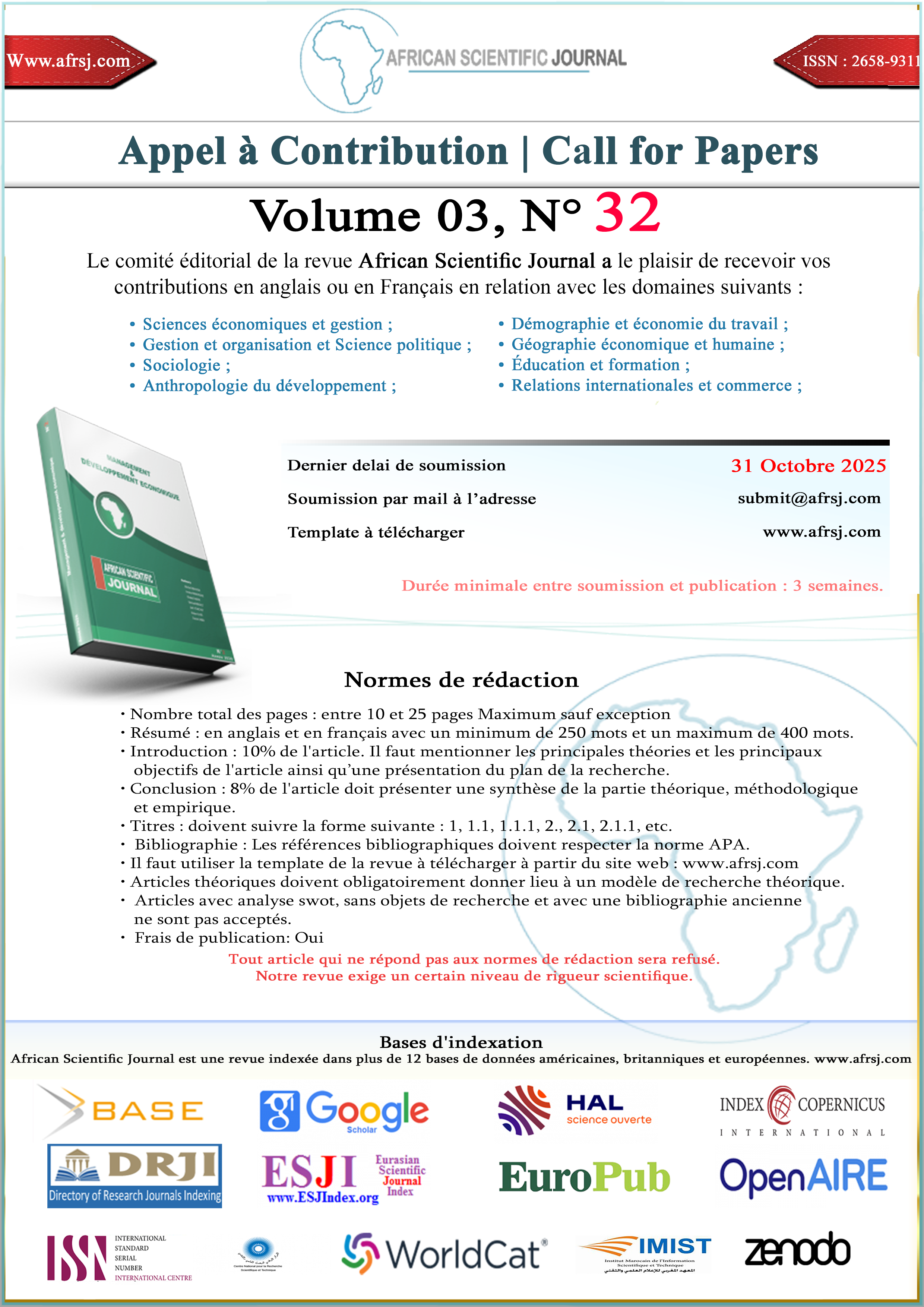The Role of Infrastructure in the Dynamics of Intra-African Trade: Implications for the AfCFTA
DOI:
https://doi.org/10.5281/zenodo.8380804Keywords:
ZLECAF, CENSAD, Infrastructure, Gravity model, Panel data, regional integration, Hard, Soft infrastructureAbstract
This study examines the impact of infrastructure development, both hard and soft , on the regionalization of intra-African trade. It is based on the analysis of panel data applied to the member countries of CENSAD, as well as an augmented gravity model enriched with variables describing the quality of logistics infrastructure, the level of technological development, the degree of economic freedom, and the level of customs complexity. The results of this study highlight that the regionalism implemented within CENSAD stimulates intra-community exchanges. However, this positive impact is mitigated by infrastructure gaps, administrative and customs burdens, institutional opacity, as well as the weakness of information and communication technologies. In summary, this study demonstrates that a 5% improvement in infrastructure within the community would stimulate intra-CENSAD trade by 128%. The main increases would occur following the easing of customs procedures, as regionalization would be boosted by 48%. The second priority area for reform within the economic and regional community is the institutional environment. Furthermore, modernization and optimization of governance would increase the level of intra-regional trade by approximately 41%
Downloads
Published
How to Cite
Issue
Section
License
Copyright (c) 2023 African Scientific Journal

This work is licensed under a Creative Commons Attribution-NonCommercial-NoDerivatives 4.0 International License.





















